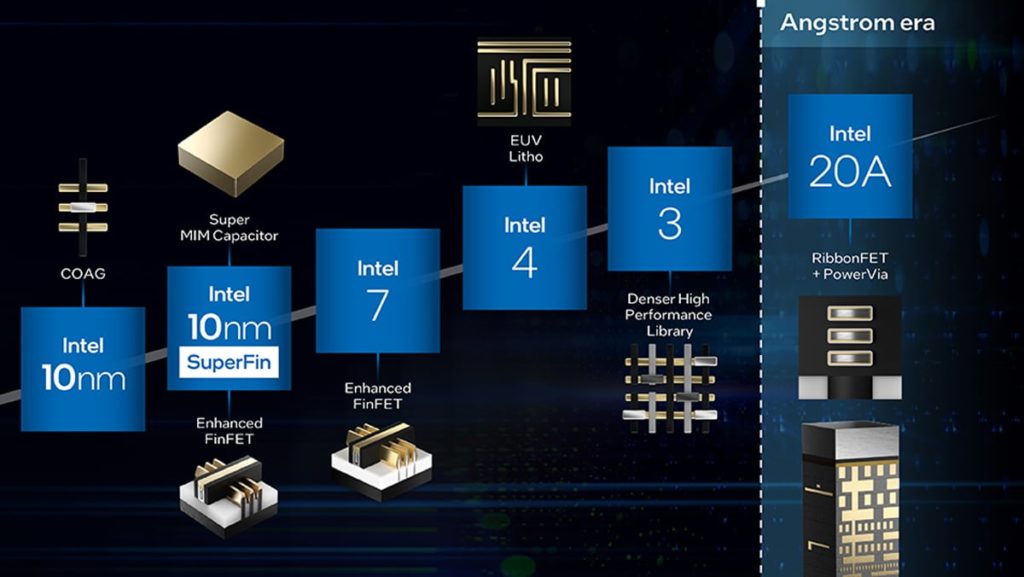- Joined
- May 6, 2019
- Messages
- 12,595
- Points
- 113
Image: Intel
As part of today’s Intel Accelerated event for reassuring investors that Intel is poised to return to its former glory and reclaim its product leadership crown in 2025, Gelsinger revealed a brand-new road map that confirms Intel has completely changed its node naming. Instead of the traditional 7 nm and 7+ naming schemes, those products are now called “Intel 4” and “Intel 3,” respectively, while future 5 nm and 5+ products have been renamed to “Intel 20A” and “Intel 18A,” respectively. The “A” in those names refers to angstrom, a new era of semiconductors that will leverage two breakthrough process technologies also revealed by Gelsinger today: “RibbonFET, Intel’s first new transistor architecture in more than a decade, and PowerVia, an industry-first for backside power delivery.” Intel estimates that Intel 20A will ramp in 2024...
Continue reading...
